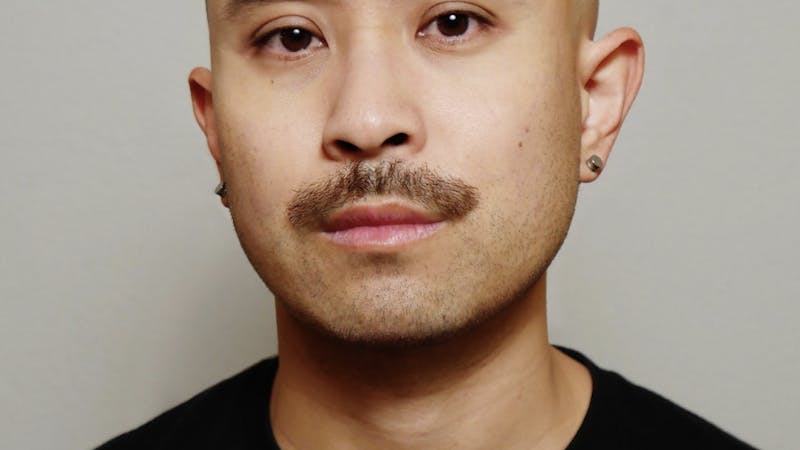Rice, Medical Center create new chemo technology
Researchers at Rice, Baylor College of Medicine and The University of Texas M.D. Anderson Cancer Center are developing new methods to treat cancer using a technology called plasmonic nanobubbles to inject chemotherapy drugs directly into cancer cells.
The process starts by attaching cancer antibodies to gold nanoparticles. The cancer cells then recognize these antibodies and allow the gold nanoparticles cross their membranes. Next, the gold nanoparticles are exposed to a short laser pulse, which converts the particle into heat. The medium around the nanoparticles in the cell then evaporates, creating a vapor nanobubble. The nanobubble makes a temporary hole in the cancer cell membrane and finally injects the cancer-fighting drug into the cell, according to Dmitri Lapotko, a faculty fellow in biochemistry and cell biology and in physics and astronomy at Rice.
One of the biggest problems in cancer treatment is that many advanced cancers develop drug resistance. The PNB technology overcomes that issue, Xiangwei Wu, an associate professor of head and neck surgery at M.D. Anderson, said.
"[PNBs] can overcome resistance by physically destroying [cancer] cells, improving the efficiency for drug delivery," Wu said.
PNBs offer a targeted delivery of cancer drugs to the cancerous cells, Wu said.
According to research presented by Lapotko, in testing, PNBs increased the efficacy of chemotherapy drug Doxil by 33 times while also allowing for lower drug doses, shorter treatment time, and lower levels of toxicity to healthy surrounding cells.
"PNBs were developed as the method to reduce the nanoparticle dose and to improve the selectivity of the nanoparticle effect to specific cells, for example cancer cells," Lapotko said. "PNBs also solved the problem of non-specific uptake of nanoparticles by healthy cells."
Lapotko said that the treatment could also be more effective in combination with surgery in treating cancer.
"PNBs may kill cancer cells that are hidden among vitally and functionally important normal tissues that would otherwise be damaged during surgery," Lapotko said.
Duncan College junior Martin Mutonga is training and working with Lapotko in his lab. Mutonga said PNBs are also useful for diagnostic purposes.
"The nanobubbles scatter light with a greater intensity than any known nanoparticle and fluorescent labels," Mutonga said. "This characteristic, combined with PNBs' target specificity, makes it possible to use PNBs as theranostic agents that combine diagnosis, therapy and therapy guidance into one quick step."
Professor of biochemistry and cell biology Cindy Farach-Carson said she believes developing this technology is crucial to cancer research.
"As one who believes the only good cancer cell is a dead cancer cell, it is critical that we continue to develop these new technologies that can move us from killing cancer with scalpels, poisons and X-ray beams to treating cancer with sensitive targeted agents that will spare normal tissue and reduce the side-effects," Farach-Carson said.
PNBs have been extensively tested in individual cell cultures and are now being tested in mice, Wu noted.
"Preliminary data shows encouraging results," Wu said. "We have to do extensive testing in animals before clinical trials. Our ultimate goal is to use this technology in patients."
Lapotko said he wanted to work with researchers at BCM and M.D. Anderson because of his colleagues' expertise and the opportunity for translation to a clinical application.
"I'm a physicist, and this interdisciplinary work also needs medical and biological brains," Lapotko said.
He added that he thought Rice's relationship with The Texas Medical Center provided more opportunities for research at Rice.
M.D. Anderson Cancer Center, a part of the University of Texas started in 1941 and located in the Texas Medical Center, focuses on cancer patient care, research, education and prevention, according to a statement on M.D. Anderson's website. U.S. News & World Report named M.D. Anderson the top hospital in the nation for cancer care in 2011.
Baylor College of Medicine, located in The Texas Medical Center since 1943, is a private medical school affiliated with eight teaching hospitals in Houston. It is focused on excellence in education, research and patient care, a statement on the BCM website said. U.S. News & World Report named BCM one of the top 25 medical schools for research in 2013, the website added.
The connections with M.D. Anderson and BCM resulted from Lapotko's personal searches when he came to Houston in 2009, Lapotko said. Lapotko's lab at Rice is leading the research on PNBs with M.D. Anderson assisting under subcontract, and collaboration with BCM is part of a new project of the Center for Gene and Cell Therapy at BCM, Lapotko added.
Wu said he thought collaborating with Lapotko helped enhance his research.
"I'm working on molecular biology, Wu said. "This new technology brings me another avenue of research. It's a mutual benefit."
For more information about PNBs, visit pnblab.blogs.rice.edu.
More from The Rice Thresher

Andrew Thomas Huang puts visuals and identity to song
Houston is welcoming the Grammy-nominated figure behind the music videos of Björk and FKA twigs on June 27.

Live it up this summer with these Houston shows
Staying in Houston this summer and wondering how to make the most of your time? Fortunately, you're in luck, there's no shortage of amazing shows and performances happening around the city. From live music to ballet and everything in between, here are some events coming up this month and next!

Review: 'Adults' couldn’t have matured better
Sitcoms are back, and they’re actually funny. FX’s “Adults” is an original comedy following a friend group navigating New York and what it means to be an “actual adult.” From ever-mounting medical bills to chaotic dinner parties, the group attempts to tackle this new stage of life together, only to be met with varying levels of success.

Please note All comments are eligible for publication by The Rice Thresher.